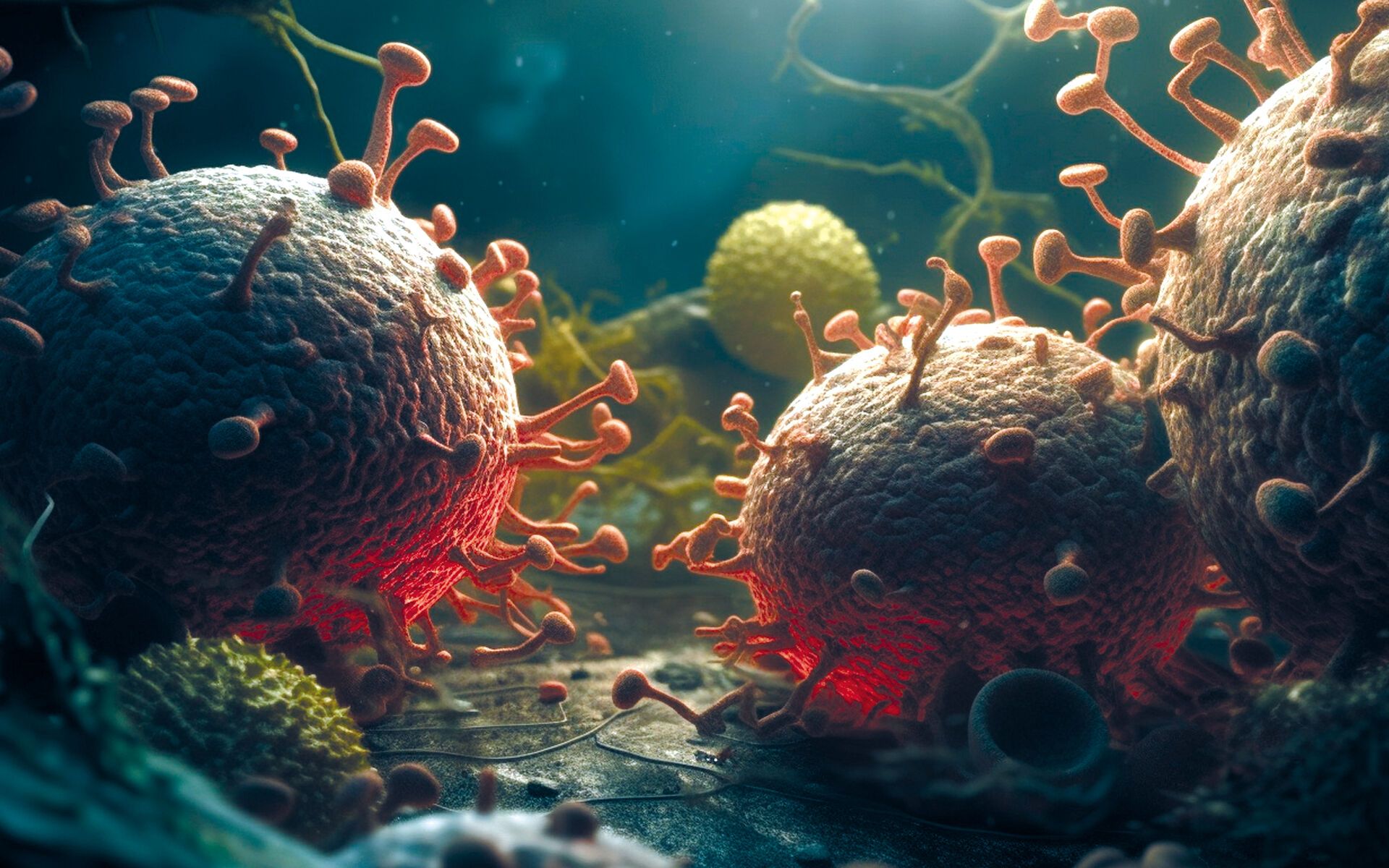B-1 Cell

In This Article
-
The immune system has unfathomable combat tactics against both the mutated and cancerous “anarchist” cells within itself and the viruses, bacteria, and fungi that may come from outside. As science develops, almost every day a new secret about this system is revealed in immunology labs.
-
The most obvious feature of B1 cells is that they play a role in the production of immunoglobulins, which are vital in protecting against disease agents. B1 cells are strategically important in fighting autoimmune and malignant diseases.
No craftsman leaves work he has built unprotected and open to destruction. Sometimes protection mechanisms are more complex than the work itself. Our body, too, has not been created without protection. New scientific discoveries reveal some of the protection measures preventing the body’s thousands of systems, each a marvelous work of art, from being destroyed by a virus or bacteria.
When we are healthy, we tend to ignore how this mechanism ensures all of the mind-stopping biological events continue to function in our body. But at all times, there is a very perfect army protecting our body.
This perfect army, known as the immune system, has unfathomable combat tactics against both the mutated and cancerous “anarchist” cells within itself and the viruses, bacteria, and fungi that may come from outside. As science develops, almost every day a new secret about this system is revealed in immunology labs. One of these is a glazed group of cells emerging in the mother's womb. This immune system cell, called the “B-1 cell,” was identified as in women’s wombs during a study to map the cells in the human body and classify cell groups. However, it was not easily understood. In fact, while B cells are known as a general group, these mysterious cells of a different character were first discovered in mice in the 1980s [1].
These cells, which appear in the womb in the early stages of the development of mice, produce various antibodies when they are stimulated and activated. While some of these antibodies normally attach to microbes and render them harmless, they also attach to the mouse’s own cells and help expel dying or dying cells from the body. If the defective cells, which are now old and exhausted, are not eliminated from the body, the areas where they are located become garbage, and inflammations that we can call “putrefaction” appear. B-1 cells, then, produce as the first line of defense antibodies against pathogens, such as viruses and bacteria.
After the discovery of B-1 cells in mice, a research group in 2011 reported that they had also found equivalent cells in humans, but these results have not yet been accepted as conclusive evidence. B1 cells are different in many ways from the B cells we have long known. Their most obvious feature is that they play a role in the production of immunoglobulins, which are vital in protecting against disease agents. B1 cells are strategically important in fighting autoimmune and malignant diseases, but the number of B1 cells decreases with age, which makes the elderly more prone to disease. Since the nature and behavioral patterns of B1 cells during health and disease are not yet well understood, discussions about these cells continue [2].
The development of the immune system is a process that is seen with the development of all other systems and organs of the embryo. This takes place in a controlled manner at any time, taking into account new conditions and the possibility that tissues, which develop in a protected and sterile environment (such as the uterus) and differentiate every day, will encounter an abnormal situation, like an alien microbe.
In a sense, the embryo that has embarked on the journey of life is facing elements that can cause thousands of diseases until and after birth. However, it is maintained by a structure that emerges in the whole body, gradually showing the network landscape. In other words, as the embryo develops, each new cell group and tissue is memorized by being marked and encoded by the cells of the immune system for easy future identification. This is how our organs, such as the kidney, pancreas, heart, and our whole body can decode and separate the microbes without making mistakes at the time of infection. What happens if a mistake is made? Autoimmune diseases can develop. During this “misprogramming,” the system that’s supposed to protect the body can instead destroy it.
There is strong evidence that B1 cells are created in the first and second trimesters of human development. Dr. Nicole Baumgarth, a professor at the UC Davis Center for Immunology and Infectious Diseases, said that B-1 cells can play critical roles in early development, and by studying them further, scientists can better understand healthy immune systems in humans.
The human immune system is developed in various parts of the embryo throughout pregnancy. Immune cells begin to be produced from special cells on the vitellus (yolk) sac, which are initially membranes surrounding the embryo from the outside, and then in the liver and bone marrow, the mesodermal that will form the kidneys, sex organs, and dorsal aorta without moving on to the tissues that produce the actual blood cells. It continues to be created from stem cells in the region. The immune cells produced from these basic blood-forming sites are then sent in the form of seeds to developing lymphoid organs and other organs. These studies show that the entire immune system in the embryo develops after being restructured as a distributed network between tissues, specifically focusing on one or several organs.
To make a detailed schematic of the immune system, cells of at least six organs were extracted between the 4th and 17th week of pregnancy using the yolk sac, prenatal spleen, and skin-separated cells, and the distribution of early blood-forming tissue and cell amounts in the lymphoid organs, which are critical for B and T cell development. It has been determined in which period and in which organ about 900,000 cells belonging to more than 100 cell types are grown and encoded and sent to the appropriate places. Finally, the characteristics of the B and T cells created before birth in humans were defined, and the functional confirmation of the unknown antibody secretion of human B1 cells was made.
These studies can be considered as the first step in what can be done to repair the genome of defective organs by reading them before their formation and to take precautions against congenital immune system disruptions with new technologies that we can call “cell engineering” [3].
Notes
- N. Baumgarth, “A Hard(y) look at B-1 cell development and function”, Journal of Immunology, Nov 15, 2017, 199 (10): 3387–3394.
- D. O. Griffin, “Human B1 cells in umbilical cord and adult peripheral blood express the novel phenotype CD20CD27CD43CD70”, Journal of Experimental Medicine, Apr. 11, 2011, 208(4): 871.
- C. Suo ve ark. “Mapping the developing human immune system across organs”, Science, 2022, 376/6597.








